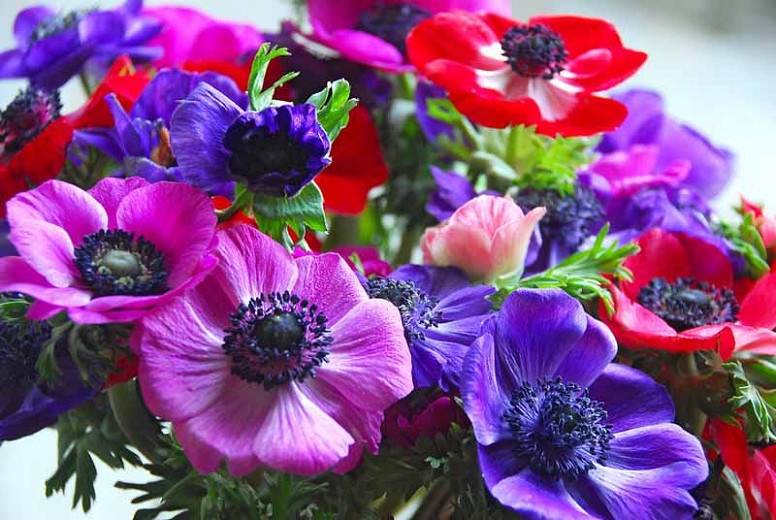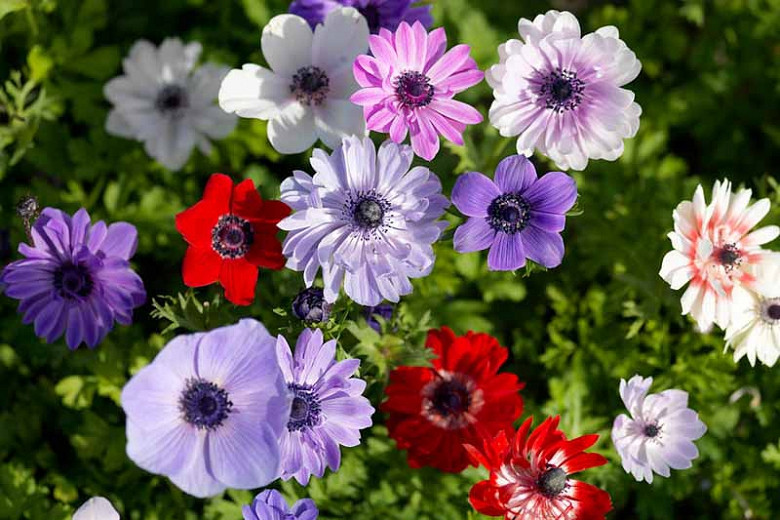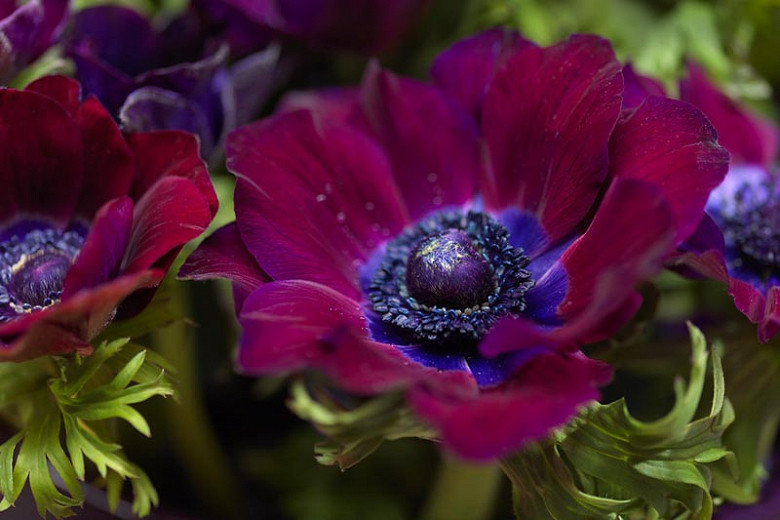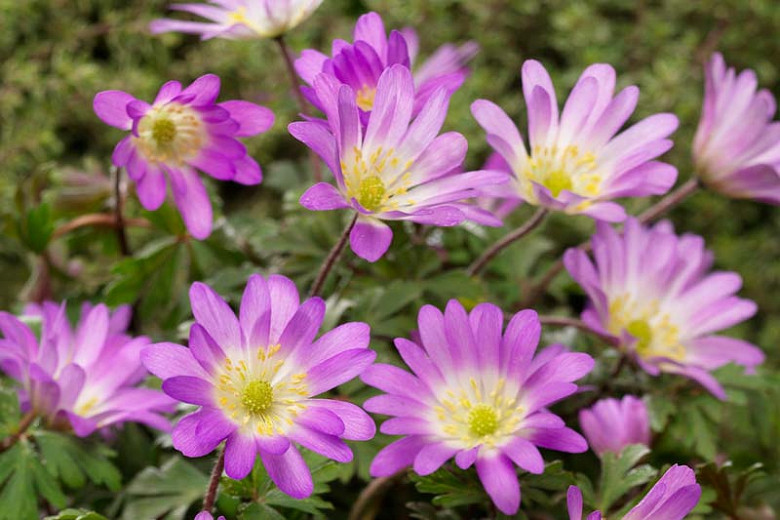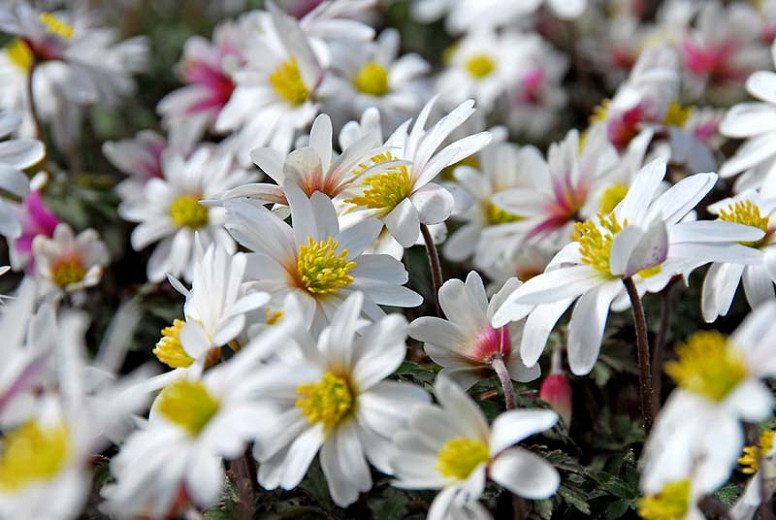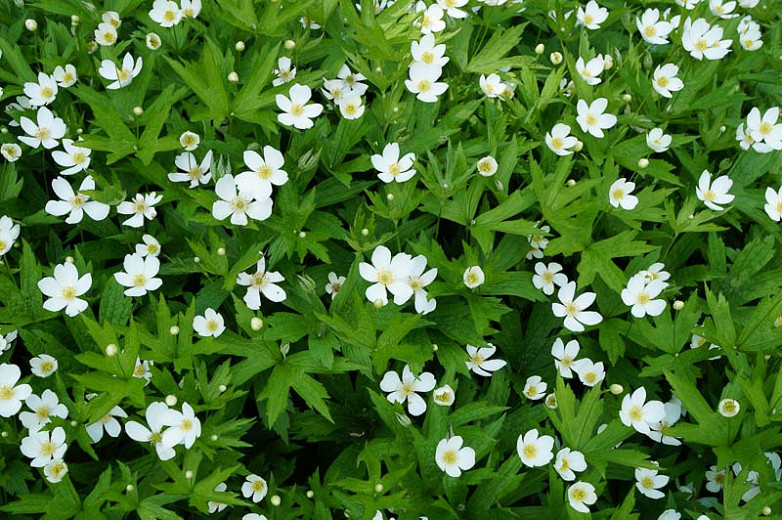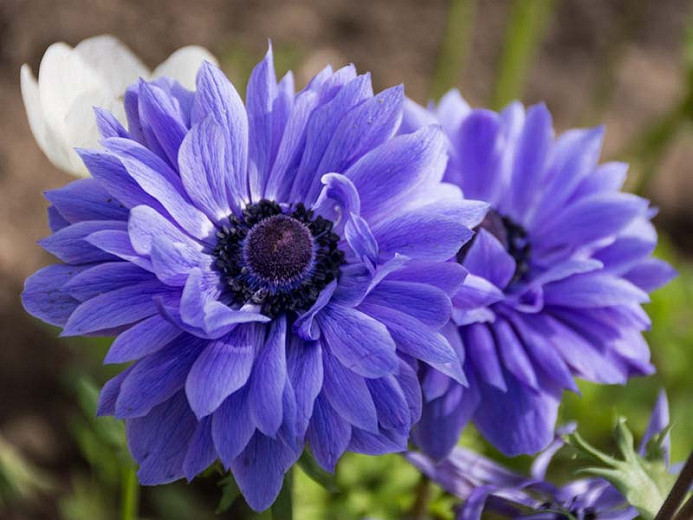Anemone coronaria (Poppy Anemone)
Anemone coronaria are most often found as cut flowers, but these gorgeously colored poppy-like flowers also thrive in the home garden where their broad, bright faces are highly appealing. Their dark-centered, single or double flowers, are available in a fresh array of colors including purple-blue, red, pink or white.
Anemone coronaria are most often found as cut flowers, but these gorgeously colored poppy-like flowers also thrive in the home garden where their broad, bright faces are highly appealing. Their dark-centered, single or double flowers, are available in a fresh array of colors including purple-blue, red, pink or white. They are borne on stiff stems atop clumps of finely divided, ferny leaves. Blooming in mid to late spring, they usually last up to 4 weeks. They attract butterflies and make wonderful cut flowers. Ridiculously easy to grow, these charming garden plants will bloom year after year, once established.
- They grow up to 10-16 in. tall (25-40 cm) and 6-9 in. wide (15-22 cm). They naturalize well in USDA Zones 7-9
- Full sun lovers, these anemones are easily grown in sandy, medium moisture, well-drained soils. Light shade is appreciated in hot areas.
- Perfect for beds and borders, rock gardens or containers they are an absolute must for the cutting garden.
- Since frost sensitive, they are generally planted in spring in cold climates (after the threat of frost is past) or in fall – late winter in mild climates. They can also be planted at intervals to provide a long season of color: plant them in mid spring for early summer blooms, in early summer for early fall blooms or in fall (mild areas) for late winter and early spring blooms.
- The small corms of Anemone coronaria need to be soaked for several hours before planting.
- Deer and critter resistant.
- Native to the warm Mediterranean regions, Anemone coronaria are most commonly found commercially in two main types, De Caen and St. Brigid.
De Caen cultivars take their name from the city of Caen in the Normandy region of France where they were first grown. They are also called poppy anemones as their single flowers do resemble poppies.
St. Brigid varieties hail from Ireland, taking their name from the patron saint of the Emerald Isle. These are double-flowering cultivars. - Eating may cause mild stomach upset, and skin contact may cause irritation.
Guide Information
| Hardiness | 7 – 10 |
|---|---|
| Heat Zones | 8 – 12 |
| Climate Zones | 4, 5, 6, 7, 8, 9, 10, 11, 12, 13, 14, 15, 16, 17, 18, 19, 20, 21, 22, 23, 24 |
| Plant Type | Bulbs |
| Plant Family | Anemones – Windflowers |
| Exposure | Full Sun |
| Season of Interest | Spring |
| Height | 10" – 2' (25cm – 60cm) |
| Spread | 6" – 9" (15cm – 22cm) |
| Spacing | 3" (7cm) |
| Depth | 3" (7cm) |
| Water Needs | Average |
| Maintenance | Low |
| Soil Type | Loam, Sand |
| Soil pH | Acid, Alkaline, Neutral |
| Soil Drainage | Well-Drained |
| Characteristics | Cut Flowers, Showy |
| Tolerance | Deer, Rabbit |
| Landscaping Ideas | Beds and Borders, Patio and Containers |
| Garden Styles | Cutting Garden, Gravel and Rock Garden, Informal and Cottage, Mediterranean Garden, Traditional Garden |
